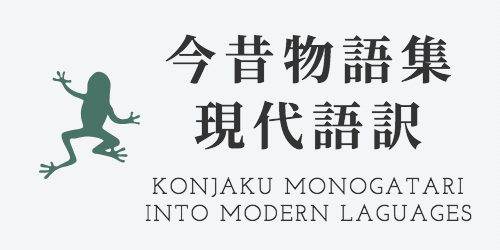Once upon a time, there was a woman known as Somedono-no-kisaki, the mother of Emperor Montoku (though in fact she was his empress) and the daughter of Chancellor Fujiwara no Yoshifusa. She possessed unparalleled and exquisite beauty.
This empress was always afflicted by a spirit ailment and received numerous prayers and rituals for her recovery. Many monks reputed for their spiritual efficacy were summoned to perform these rites, but none had any effect.
At that time, there was a mountain called Kongozan(Mount Kongō) at the peak of Mount Katsuragi in Yamato (Nara Prefecture). A revered holy man lived there. Without leaving the mountain, he could send his bowl flying to receive food and his bottle to fetch water. His spiritual powers were unmatched.
Hearing of this, the emperor and the empress’s father, the chancellor, decided, “Let us summon him to pray for the empress’s recovery.” The emperor ordered that the holy man be brought to the palace. Despite repeatedly declining, the holy man could not resist the imperial decree and eventually came to the court.
Appearing before the emperor, he performed a ritual prayer, and its effects were immediate. One of the empress’s maidservants suddenly began to cry and laugh maniacally. Possessed by the empress’s spirit, the maidservant screamed incoherently and ran around wildly. She was tied up and beaten, but the holy man continued his ritual. Eventually, an old fox emerged from the woman’s bosom, unable to run or move.
The holy man captured the fox and continued his ritual. The empress’s father, the chancellor, was overjoyed, and the empress’s illness was cured within a day or two.
The chancellor, delighted, asked the holy man to stay for a while. The holy man agreed and remained at the palace. As it was summer, the empress wore only a single robe. One day, as the wind lifted the curtain, the holy man glimpsed the empress. Having never seen a woman before, he was immediately captivated by her perfect beauty and fell deeply in love. His heart was tormented, and he became obsessed with her, unable to think of anything else. Finally, driven mad by his desire, he sneaked into her quarters and embraced her while she slept. The empress was terrified, but she was powerless to resist.
As the holy man tried to force himself upon her, the maids noticed and caused a commotion. At that time, a court physician named Taima no Kamotsugu was in the palace to treat the empress’s illness. Hearing the disturbance, he rushed in and caught the holy man emerging from the empress’s quarters. The holy man was captured and brought before the emperor.
The emperor was furious and imprisoned the holy man. The holy man prayed to the heavens from his cell, tearfully vowing, “I will die and become a demon. I will possess the empress in her lifetime.” The jailer reported this to the chancellor, who was shocked and informed the emperor. The emperor, in turn, ordered the holy man to be sent back to the mountain.
The holy man returned to the mountain, but his obsession only grew stronger. He fervently prayed to the Three Treasures (Buddha, Dharma, and Sangha) to be reunited with the empress, but it seemed impossible in this life. He resolved, “I will become a demon as I vowed,” and stopped eating. After more than ten days, he starved to death.
The holy man became a demon. He appeared naked, with a bald head, standing eight feet tall. His skin was black as lacquer, his eyes like metal bowls, and he had sharp teeth like swords. Wearing only a red loincloth and carrying a magical hammer, he stood beside the empress’s curtain. Those in the palace were terrified, losing their wits and fleeing in panic. The maids who saw him fainted or trembled under their clothes.
The demon possessed the empress, who, now enchanted, dressed beautifully and laughed as she entered her quarters with the demon. The maids heard the demon saying, “I missed you so much,” and saw the empress laughing like a flower. All the maids fled in terror.
One evening, the demon left the empress’s quarters. The maids checked on her and found nothing unusual. It was as if she remembered nothing of what had happened, though she seemed slightly more fearsome in appearance. When this was reported to the emperor, he was more worried about the empress’s future than frightened.
The demon visited the empress every day. She no longer feared him, treating him like a beloved. The palace staff watched this with sorrow and pity.
One day, the demon possessed someone and declared, “I will take revenge on Kamotsugu.” Kamotsugu heard this and was terrified, dying shortly after. His three or four sons also died one after another from madness. The emperor and the chancellor were greatly afraid and invited renowned monks to subdue the demon with prayers. After three months of rituals, the demon stopped appearing, and the empress’s condition improved, returning to normal. The emperor was delighted and decided to visit her.
It was a deeply emotional visit, with all the court officials following. The emperor entered the palace, tearfully expressing his thoughts to the empress, who also seemed moved. She appeared to be her former self.
Suddenly, the demon leaped out from a corner of the room and entered the empress’s quarters. The emperor watched in horror as the empress followed the demon inside. After a while, the demon emerged, followed by the empress, who shamelessly engaged with the demon in front of the court officials. The emperor, powerless, returned to his palace.
High-ranking women should not let monks near them. Though it is greatly embarrassing to speak of this, but it is passed down to serve as a cautionary tale for future generations.
[Translation]
Siro Inuzuka
This text was created by using ChatGPT-4o to translate a modern Japanese translation into English, and then making some modifications. There may be errors in the English expressions. Please correct any mistakes.
[Explanation]
Shinichi Kusano / Siro Inuzuka
A very sad story.
Somedono-no-kisaki (Fujiwara no Akirakeiko) was the consort of Emperor Montoku and the mother of Emperor Seiwa. Her father, Fujiwara no Yoshifusa, wrote a poem that likened Akirakeiko to cherry blossoms: “As the years pass, age grows old, yet when I see the blossoms, I have no worries” (Kokin Wakashū). It’s hard to imagine there wasn’t some parental bias, but given that Fujiwara regency began with Yoshifusa and Akirakeiko, it’s also plausible that he praised her as a means of furthering their family’s rise. Nonetheless, she was renowned for her beauty even at that time.
There is also a depiction of the emperor being ineffective. The phrase “it is greatly embarrassing to speak of this” is probably the key reason for this depiction. The introduction may contain intentional inaccuracies about Somedono-no-kisaki’s profile to subtly critique the emperor.
Despite being frail and reclusive, Somedono-no-kisaki lived to the age of 72, which was quite long-lived for that time.
[Cooperation]
Shinichi Kusano
●Japanese











コメント